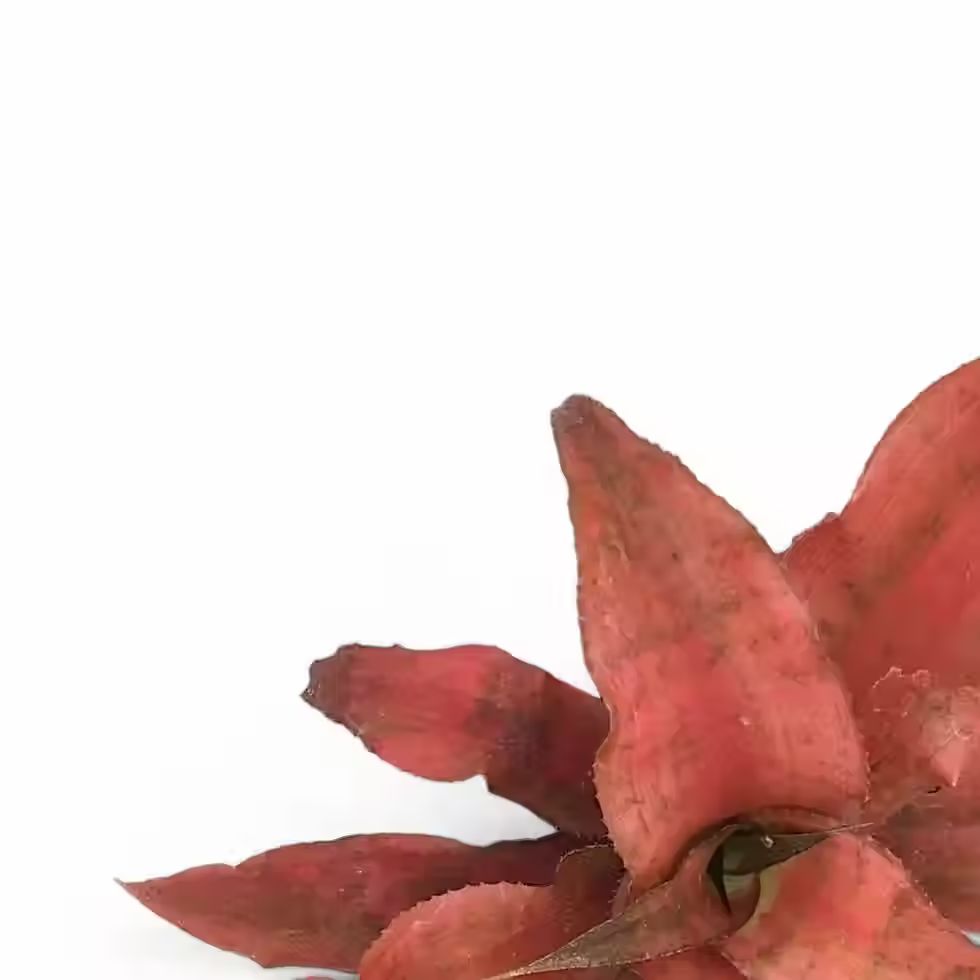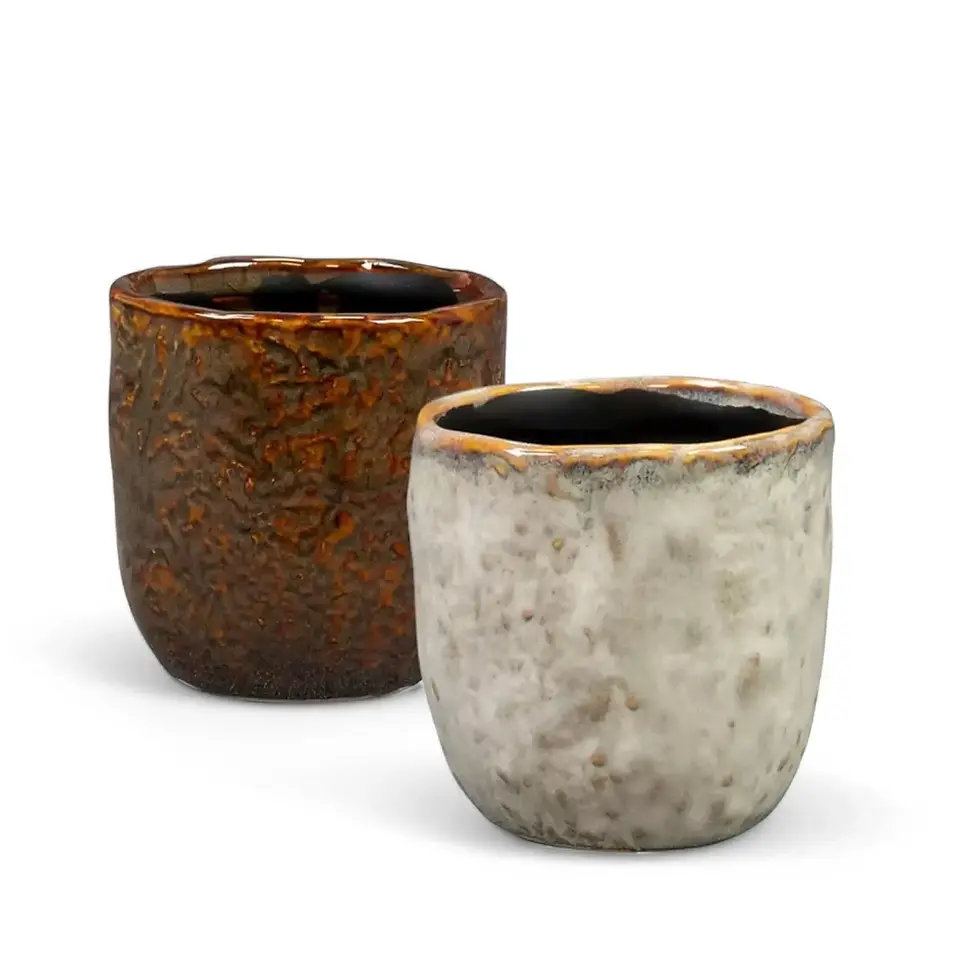Cryptanthus zonatus – Profile and Indoor Growing Guide
Compact, bold, and wild at heart — Cryptanthus zonatus, often nicknamed Earth Star or Zebra Plant, looks like it rolled straight out of a tropical jungle and decided to stay low. Its rosette of stiff, rippled leaves grows flat against the soil, banded in wild strokes of silvery white over rich green or bronzy brown. The pattern isn’t neat — and that’s the charm. It looks hand-painted, a little unpredictable, and always interesting. The foliage appears matte and slightly scaled when you get up close, and even the leaf edges come with attitude: sharply toothed, slightly curled.
Unlike other bromeliads, this one stays grounded — literally. It grows on soil, not trees. And it doesn’t put on a showy bloom either — just subtle white flowers nestled tight in the center, easily missed if you’re not paying attention. But really, with leaves like these, who needs flowers?
Physical Traits and Stand-Out Qualities
Size and Form: Reaches 15–22 cm in height, spreading 25–35 cm wide in a star-like rosette.
Leaf Texture: Firm, slightly leathery, with wavy edges and tiny teeth.
Color Pattern: Bold horizontal bands of white or silver across deep green to coppery tones.
Non-toxic: Safe around pets and children.
Evergreen Appeal: Keeps its dramatic look year-round.
Background Info and Growth Habits
Originally from Brazil’s eastern rainforests, Cryptanthus zonatus naturally grows low on the forest floor. There, the climate stays warm and damp year-round, with temperatures between 20–28°C and frequent rainfall. Unlike many of its bromeliad cousins, it’s terrestrial — rooted in the soil instead of clinging to trees.
This species grows slowly, forming a compact, ground-hugging shape. Indoors, it usually tops out at around 20 cm tall and 30 cm wide. Its growth is self-contained and doesn’t climb or trail, which makes it a tidy option for smaller shelves or terrariums. Bonus: it’s safe for pets.
Lifecycle-wise, each rosette lives for a few years, flowers once (quietly), then fades — but it always produces “pups” around the base before doing so, which continue the cycle.
How to Keep Your Cryptanthus zonatus Happy
Light: Prefers bright, indirect light. Can handle a bit of morning sun, but strong direct sun may scorch the leaves.
Water: Keep the soil evenly moist but never soggy. Let the top layer dry slightly before rewatering.
Humidity: Loves a humid environment. Aim for 50% or higher if possible.
Temperature: Ideal range is 18–28°C. Avoid drafts and cold windowsills.
Soil: Use a loose, well-draining mix (like orchid bark with some potting compost or sand).
Repotting: Only repot when absolutely needed — this plant doesn’t mind tight quarters.
Fertilizer: Feed with a diluted liquid houseplant fertilizer every few weeks.
Propagation: Separate pups from the mother plant once they’re at least a third of its size and have formed roots.
Hydroponics: Adapts well to semi-hydro setups with inert substrates and good drainage.
Pruning: Trim dry or damaged leaves to keep the shape clean.
Typical Problems and Easy Fixes
Pests:
Mealybugs and Scale: Check leaf bases. Dab with alcohol or use neem spray.
Fungus gnats: Improve airflow and let the top soil dry more between waterings.
Leaf Issues:
Browning tips: Usually low humidity. Try raising moisture in the air.
Faded color: Needs more light (but not direct midday sun).
Yellowing or mushy base: Overwatering. Adjust your watering routine fast.
Fungal problems:
Watch for soft rot or leaf spots in overly damp conditions — improve air circulation and reduce watering if you see signs.
Good to Know
This plant doesn’t need support, trellises, or tying. It grows in place and stays compact. Once the original rosette finishes its life cycle, offsets take over and can be separated or left to cluster. It’s one of the few bromeliads that naturally grows on the ground, not trees — understanding this helps dial in care. Mimic its native, humid understory habitat and you’ll keep it thriving.
Where the Name Comes From
The genus name Cryptanthus combines two Greek words: kryptos (hidden) and anthos (flower), referring to the tucked-away blooms at the heart of the rosette. The species name zonatus means “banded” — a nod to its boldly striped leaves. Originally described as Tillandsia zonata by Lem., it was reclassified under Cryptanthus by Visiani in 1852.
FAQs – Other Things You Might Wonder
Can Cryptanthus zonatus live in a terrarium?
Yes — it’s actually perfect for terrariums thanks to its compact size, humidity needs, and slow growth.
Does it flower?
Yes, but the flowers are small, white, and hidden deep in the center of the rosette. They don’t last long and aren’t the main feature.
How long does each plant live?
Individual rosettes live for a few years. After flowering, the mother rosette dies off, but not before producing baby offsets (pups) you can keep growing.
Order today to grow your own wild-striped Earth Star. This rare bromeliad adds drama, texture, and bold color — all in a compact package.
Cryptanthus zonatus
Cryptanthus zonatus comes in a ⌀ 9 cm pot and is approximately 15 cm tall
























































